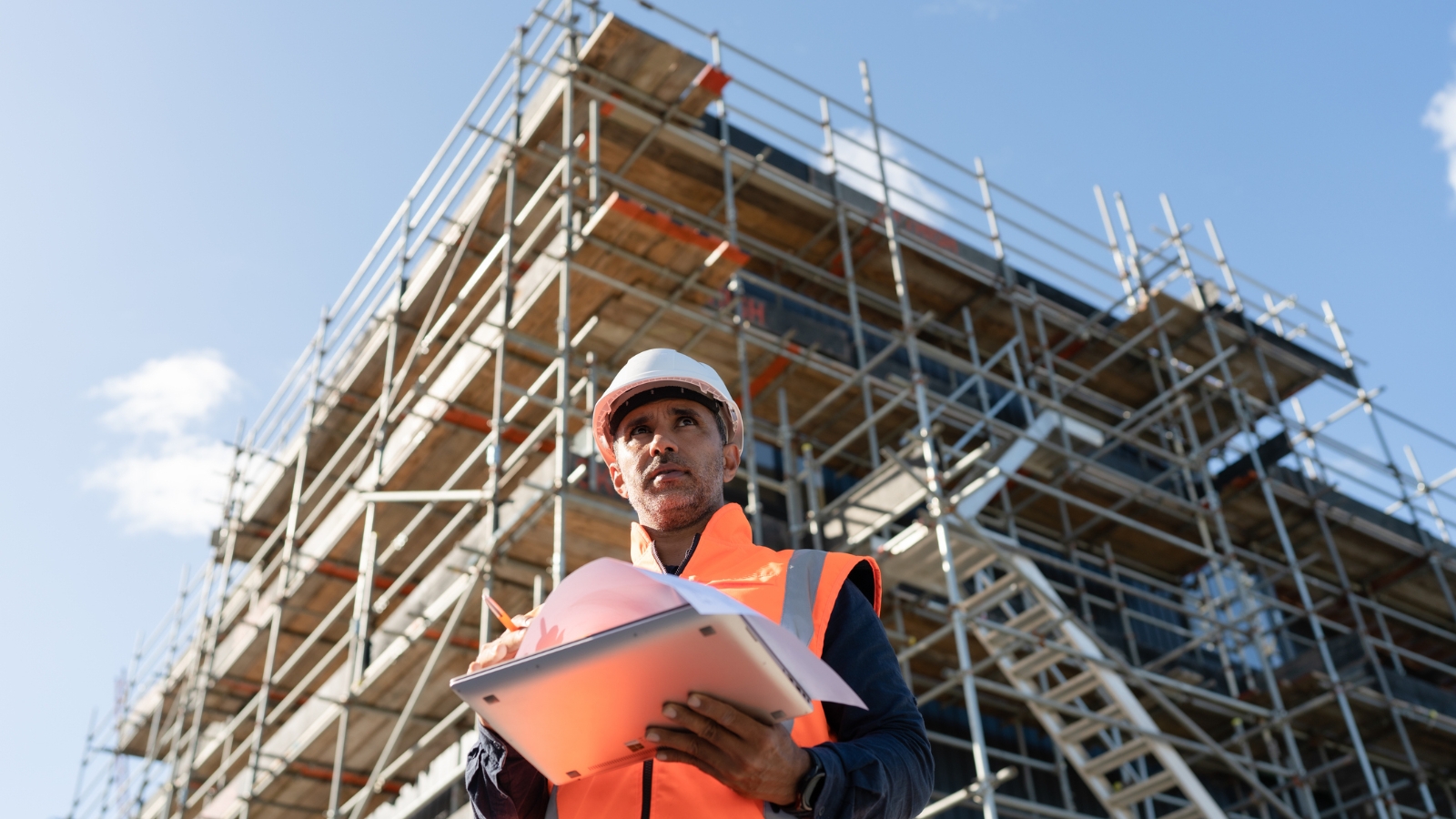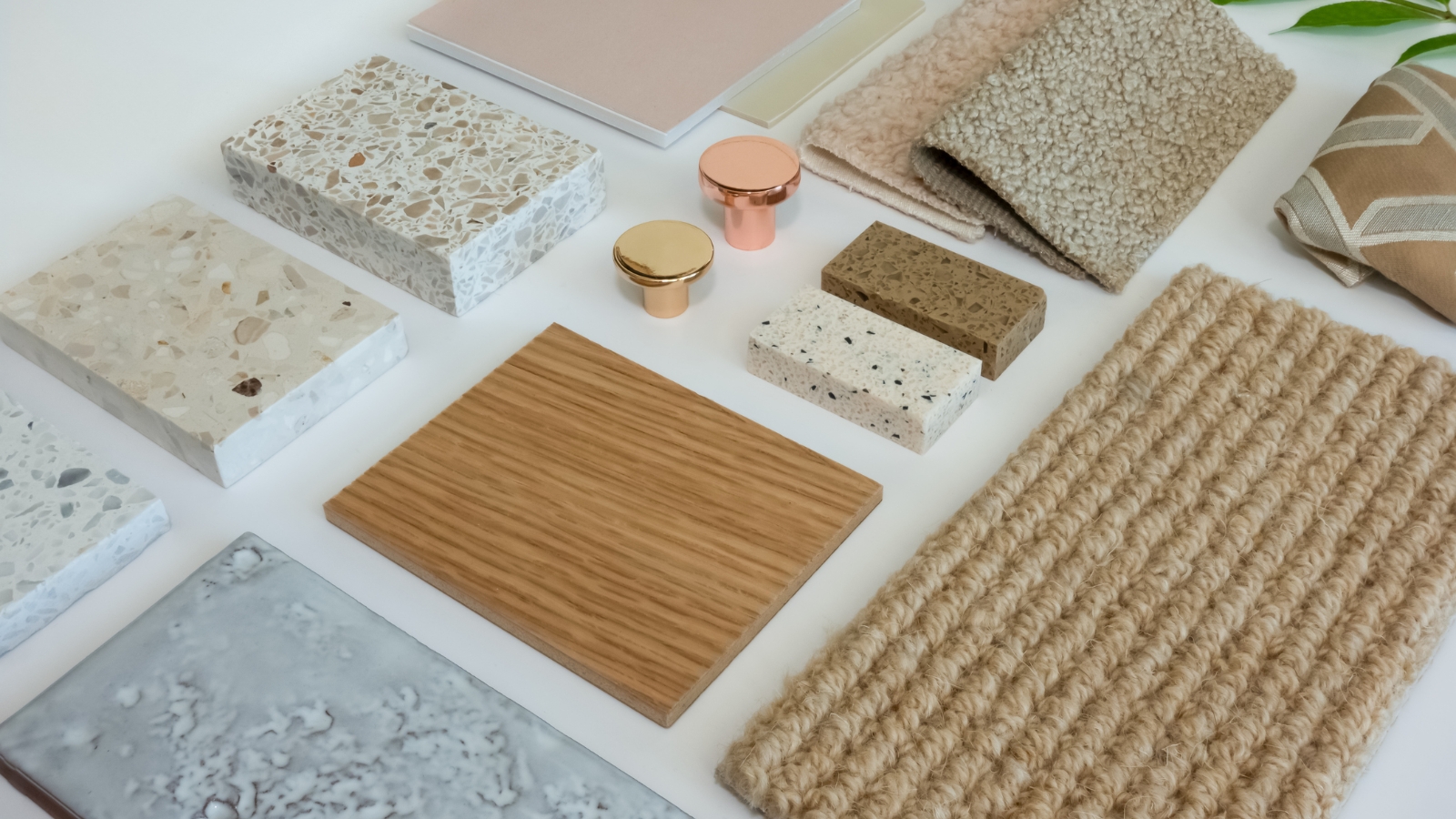Feature article
Adventure whare: A modern take on the A-frame cabin
This compact abode is cut from the cloth of the traditional A-frame and woven with a decidedly modern spin of colour.

The entry sequence is from the rear, where the full extent of the A-frame is evident. Here, there's little sense of what's within
Envisioned as a base camp for outdoor activities in the vast expanse of Canterbury’s high country, this compact abode is cut from the cloth of the traditional A-frame, and woven with a decidedly modern spin of colour and texture that echoes the alpine environment.
Lodged between two mature trees — its apex marking a middle ground — this cabin is neither obtrusive nor dwarfed; it stands proud, with its face to the sun and the Craigieburn Range and its back to the peaks of Porters Pass.
Oriented towards the northwest, its immediate view is onto a bush reserve, creating an intimate connection with an ever-changing landscape.
“It’s a lovely way to engage with the wider setting — you can look out and see the colours changing with the seasons, or, on a windy day, just take in all the movement,” says co-founder of Studio Well, Ben Comber.
Approach is from the south, where the full extent of the A-frame is evident. Here, there’s little sense of what’s within.
“It’s not until you get inside that it really reveals itself. When you step into the main living area, it’s like taking a breath. It’s a volume-rich space that draws you in,” Ben explains.
It is, perhaps, the immediacy of the surroundings that is so alluring. In dramatic contrast to the cloaked exterior, here the roof peels up, revealing the exposed rafters and the expansive timber-framed glazing that follows the roofline to its apex, creating at once a sense of being within the landscape and sheltered from it.
“The clients have been coming to this area for years and have a really strong connection with the place,” Ben says. “They’re heavily involved with the club ski fields in the area, which are operated with a No. 8 wire mentality — something we consciously wanted to draw on in the design.”
Exposed rafters give the cabin a sense of grounding; macrocarpa weatherboards meet a dark Colorsteel that recesses the east and west elevations into the natural landscape
Locally milled, chemical-free macrocarpa weatherboards were chosen to wrap the building, both for their knotted, rustic aesthetic and with the idea that they will slowly silver off over time, further anchoring the building. A cloak of dark COLORSTEEL gently recesses the east and west elevations into the natural landscape.
“A large northern roof overhang controls solar gain in the summer, while natural ventilation is achieved with the stack effect created by the high-pitched volume and ceiling fans. In winter, the radiant heat produced by a clean-burning wood fire maintains a comfortable temperature.”
The internal material palette, dominated by cork and plywood, is elevated to a sense of playfulness with the use of vibrant earthy hues — ranging from the depth of Resene Log Cabin, in which the MDF kitchen cabinetry is painted, to the more whimsical mossy green of Resene Flax for the storage cupboards and wardrobes and the ochre tone of the Resene Toffee used for bedroom doors.
“It was a journey to draw those colours from the environment. The hero is the dark, bold green of the kitchen cabinetry, which we took from the classic high-alpine native bush, where you get the really dark tones of mountain beeches and their black trunks and dark leaves. The mossy green reflects the lichens of the region, and the burnt ochre tone we took from the colours of the tussocks in summer as they dry out.”
The hero of the kitchen is the rear cabinetry, painted in Resene Log Cabin; the lighter, more whimsical hue of Resene Flax was used for storage cupboards to either side
Flat-roofed bedroom wings spill off the central space — more intimate retreats that offer a juxtaposition to the voluminous communal area. A loft behind the kitchen is perched on top of the service areas, creating room for additional guests.
There’s an inherent honesty to this building in its partly exposed structure. “We didn’t want to cover up those structural elements; rather, we wanted to celebrate them,” Ben says. The beams are buttress-like, demarcating the built form from the gently encroaching tussocks and grasses.
“This is a house that really comes alive when it is filled with people. Despite its small footprint of 157m², it caters to a lot of guests.”
Exposed beams and a simple material palette create a relaxed aesthetic, perfectly suited to the rural alpine setting
And that’s what this cabin is all about.
As Ben puts it, “This is our clients’ playground. It’s where they come to connect with each other and enjoy the mountains and the landscape. We felt a responsibility to create something of permanence; a place for them to enjoy that didn’t take away from the beauty of the natural setting.
“What I enjoyed most about this process was that it was a real team effort. One of the clients was also the engineer, so he brought a real passion to that side of it, while the builder was incredible — a real craftsman. It’s passion like this that delivers successful projects — because they are a combination of the energy of everyone involved.
“I think what we have achieved here is a robust, sustainable little whare that is well prepared to combat future climate challenges.”
We wholeheartedly agree.
Words: Clare Chapman
Images: Stephen Goodenough
This article was originally published on homemagazine.nz
Author







